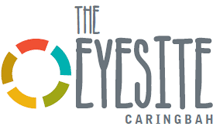Myopia
Management
What is Myopia?
Myopia is blurry long-distance vision, often called “short-sightedness”. A person with myopia can see clearly up close but far away objects look blurry or fuzzy. Using glasses can help a person see more clearly but alone is not always the answer to the total management plan needed in myopia.
Myopia is a global problem with half the world’s population predicted to be myopic by 2050. Australia is no exception with prevalence of myopia among Australian 12 year olds doubling in 6 years.
Becoming short sighted doesn’t just mean stronger glasses. A myopic eye is larger than a normal eyeball which carries a higher risk of cataract, retinal detachment, and myopic maculopathy as well as higher rates of blindness.
Myopia in children tends to progress or get worse throughout childhood, and each increase in script increases the risk of ocular diseases. If your child already wears glasses, you can do something to reduce and their risk and stop their vision from worsening. If they, don't you can assess their risk of developing myopia.
What are the risk factors?
Parents play a big role in the health of their children’s eyes. Current research indicates that genetic and environmental factors contribute to whether a child will be myopic or not as well as in the progression of myopia.
Close Work:
Spending more time on close work, even from 2 hours a day can increase your risk of myopia development and progression.
This includes using smart phones and tablets, playing computer games, drawing, and reading. The use of tablets in toddlers and young children increases time on close tasks and distracts from other outdoor activities important for vision development.
Genetics:
Ethnicity and family background play a role in risk factors for myopia development particularly those of Asian ethnicity and faster progression of myopia, with higher worldwide prevalence in this group of people
A person with one short-sighted parent has three times the risk of developing myopia – or six times the risk if both parents are short-sighted
Environment
Less time spent outdoors during daylight hours has been linked to an increased risk for the development and progression of myopia.
Visual Efficiency
Problems with visual efficiency including eye teaming and your focusing system can increase your risk of developing or progressing myopia.
Simple steps to reduce your risk factors for myopia
#1 – Get Children Outside!
Walk your dog, ride a bike, jump on your trampoline! An increase in time outdoors of about 2 hours per day reduces the risk of developing myopia by 2-3 times.
So, get your child outside to play! Encourage them to look around and use that full range of vision every day.
#2 – Put The Device Down!
Spending too much time indoors and performing a lot of near vision work without a break (e.g. playing video games or being on your phone) plays a substantial role in increasing the risk of developing or progressing myopia.
The average child in Western countries spend as much as seven hours per day on a screen. Our children’s eyes have never had to work so hard, with more children than ever developing myopia.
Technology is here to stay, so let’s be smarter about how we use it.
The 20-20-20 Rule:
Encourage your child to take regular BREAKS- for every 20 minutes spent on near tasks, take a break for 20 seconds gazing into the distance (20 feet or 6 metres away).
#3 – Early Detection Creates Prevention
Early diagnosis and intervention is the key to slowing the progression of myopia.
Contact our practice today to schedule your vision assessment and management plan.
What can we do to help?
Treatment of eye focusing and binocular vision problems
Prescription glasses with appropriate stress relieving component for close tasks
Multifocal soft contact lenses
Orthokeratology


